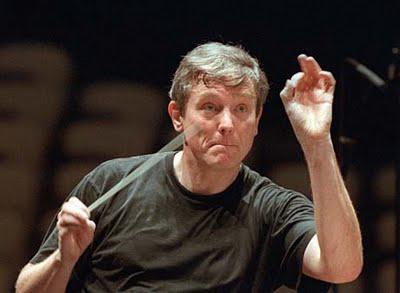Nielsen and Stravinsky mark RDO's Overdue Debut

Royal Danish Orchestra's Music Director Michael Schønwandt.
The art of programming symphony concerts is a tricky one. Finding the links between disparate pieces, by different composers, in different genre is hard. And some music directors settle for the fact that the two or three scheduled works are from the same historic period, or refer to the same book, or something equally esoteric.
Michael Schønwandt, music director of the Royal Danish Orchestra, displayed his mastery of this art on Thursday night, as the RDO made its long-awaited debut at Alice Tully Hall as part of this summer's Lincoln Center Festival. The Copenhagen-based orchestra was founded in 1448, and ranks as Europe's oldest performing orchestra. For this concert, Mr. Schønwandt offered a pairing of works by Carl Nielsen and Igor Stravinsky.
Upon listening, the connections between Stravinsky and Nielsen were readily apparent. They were innovative orchestrators, skilled in the use of rhythm. Both sprinkled their compositions with welcome doses of humor. That was evident in Nielsen's brief Pan and Syrinx, a tone poem that pushes the woodwinds of the orchestra to the fore in an entertaining dialogue. Exceptional playing from the clarinet, English horn and bassoon was the order of the day, underpinned by a swift current of harmonies in the strings.
The clarinet moved to the front of the stage for the next work, Nielsen's Clarinet Concerto with RDO principal John Kruse. Mr. Kruse demonstrated the full expressive range of his instrument in the difficult solo part. He drew different voices from the clarinet, from a series of sad, minor-key groans to the instrument's more familiar, sunny register, racing up and down the instrument's range to thrilling effect
The 27-minute single movement work offered considerable challenge, including a long solo cadenza that spiralled gracefully downward before being caught on an updraft of orchestral sound. The piece openes with a fugal, almost baroque feel. Nielsen then veers into modern territory, developing a long conversation between so soloist and orchestra. Mr
The concert concluded with Pulcinella, a work firmly in the neo-classical mode that defines the middle period of Stravinsky's career. Although the dance movements and allegros recall the writing of Handel and Mozart, Stravinsky throws the occasional orchestral curve-ball at the listener. He has the musicians stop on a dime, or play an ostinato rhythm that is characteristically Russian underneath the instrumental filigree.
Mr. Schønwandt conducted with flair, lip-synching along as he directed the three singers in their solo arias and brief ensembles. Mezzo Tuva Semmingsen brought intelligence and pointed meaning to her arias. Tenor Peter Lodahl sang with sweet, plaintive tone. Baritone Jochen Kupfer sang Stravinsky's bass part with a dark, warm tone that fit beautifully with the other two soloists.
As Pulcinella develops, more and more of Stravinsky's unique voice comes through. Most notable: the emphatic trombone solo in the latter third of the work that recalls the early recordings of New Orleans jazzman Kid Ory. The rambunctious part was a breath of fresh air in the middle of the score, played with ferocity by soloist Torbjørn Kroon. As the work concluded with another trio and a fast Allegro, the orchestra's long-overdue New York debut came to a triumphant close.

